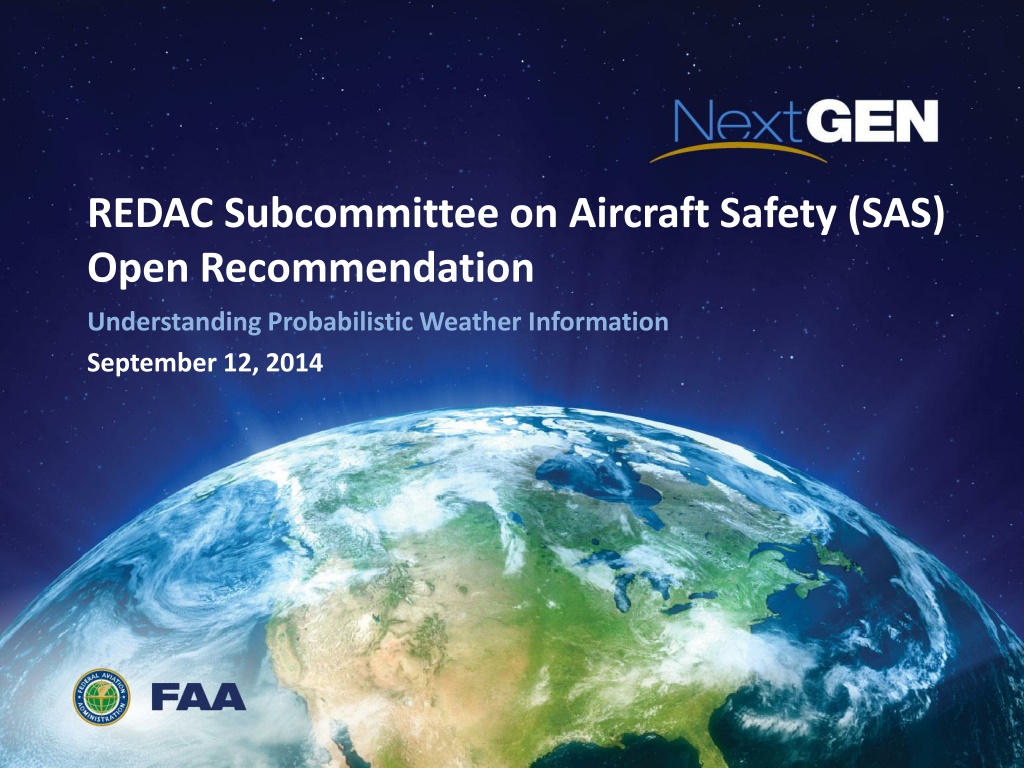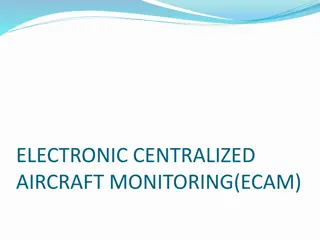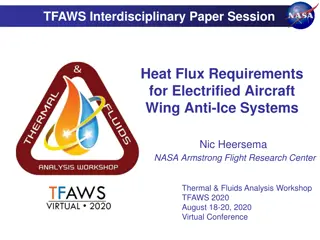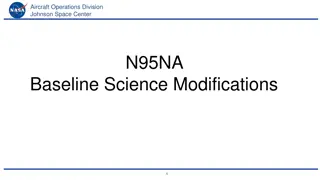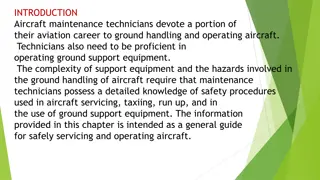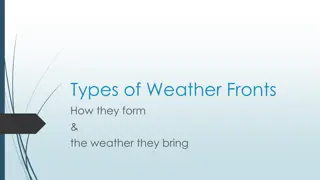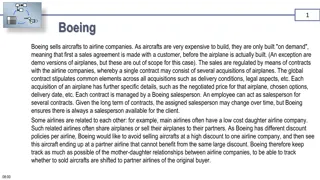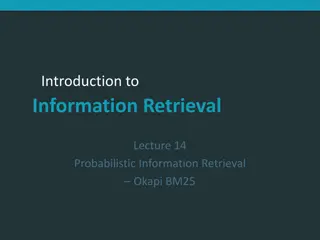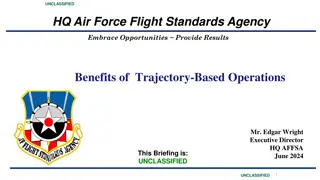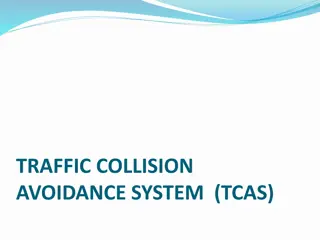Understanding Probabilistic Weather Information in Aircraft Safety Recommendations
Subcommittee on Aircraft Safety (SAS) emphasizes the importance of understanding probabilistic weather information for better operational decisions in aviation. Recommendations include leveraging existing knowledge and conducting studies to improve user understanding and decision-making processes related to convective weather forecasts. Challenges in transitioning from deterministic to probabilistic weather products are highlighted, emphasizing the need for tailored approaches to meet the diverse needs of users.
- Aircraft Safety
- Weather Information
- Probabilistic Forecasting
- Aviation Decision-making
- Convective Weather
Download Presentation

Please find below an Image/Link to download the presentation.
The content on the website is provided AS IS for your information and personal use only. It may not be sold, licensed, or shared on other websites without obtaining consent from the author. Download presentation by click this link. If you encounter any issues during the download, it is possible that the publisher has removed the file from their server.
E N D
Presentation Transcript
REDAC Subcommittee on Aircraft Safety (SAS) Open Recommendation Understanding Probabilistic Weather Information September 12, 2014
SAS 2014 Spring Open Recommendation Finding: Information about the likelihood of predicted weather events has the potential to lead to better operational decisions by airline operations center personnel, pilots, air traffic controllers, and flow management specialist. To make use of such information in the design of weather displays and in decision support tools and in the training for their use requires an understanding of how these people deal with probabilistic weather. Recommendation (1): There is a significant body of knowledge about how people deal with probabilistic information for decision making in situations involving risk. It is recommended that the Weather program get sufficient understanding, using such information where appropriate to help them design weather forecast displays, decision support tools, and associated training that makes use of probabilistic weather information. FAA Response: The Federal Aviation Administration (FAA) agrees with the Subcommittee to leverage the significant body of knowledge that exists on probabilistic information for decision making in situations involving risk. The FAA plans to conduct a thorough literature review and looks forward to presenting progress in this area to the Subcommittee this fall. 2
Wx Program Weather Uncertainty Study Overview Assess NAS user understanding of probabilistic convective weather (CW) forecasts and uncertainty inherent in weather products by NAS users How to transition from the current mix of deterministic and probabilistic CW products to all probabilistic CW products Conducted interviews with various ATM personnel, decision support tool (DST) developers and integrators, airline personnel, and meteorologists Key findings: Users DO NOT have an equivalent understanding of terms used to express weather uncertainty in convective forecasts (i.e., chance , risk of , confidence ) NAS users DO NOT FULLY understand how to use convective weather information that includes uncertainty for decision making CW input requirements for DSTs are poorly defined at the current time Heuristics and biases repeatedly observed Availability, Confirmation, Overconfidence, Anchoring and Adjustment, Representativeness, and Risk Aversion Will be tough to overcome during transition from deterministic to probabilistic outputs even with new DSTs Very difficult to design a one size fits all probabilistic weather forecast product due to different needs of different users NY CWSU CW Uncertainty Term (probability of Severe Weather Action Plan needed) Not Expected Possible Probable Expected NY CWSU Meteorologist Probability NY ARTCC TMU User Probability 0% >0% <50% 50% <95% 95% 100% 0% 50% 100% 100% 3
WTIC Uncertainty Project Overview Flight simulation of GA aircraft flying towards intense radar echoes (red cell) One pilot group used current deterministic MET information (current commercial rendering) and one pilot group was given uncertainty information in prototype rendering in addition to current commercial rendering Observed impacts of uncertainty information on decision making RESULTS Uncertainty Study No pilots complied with the recommended 20nm separation distance from a thunderstorm (red cell) 65% of GA pilots in deterministic group and 35% of pilots in probabilistic group came within 5nm or less of a red cell Providing probabilistic weather information influenced pilot behavior to increase distance from red cells * 4 4
Wx Program & WTIC Literature Review Wx Program: Budescu D.V., et al (1988). Measuring the Vague Meanings of Probability Terms. U. S. Army Research Institute for the Behavioral and Social Sciences Kahneman, D., Slovic, P., & Tversky, A. (1982). Judgment under uncertainty: Heuristics and biases (1st ed.). Cambridge University Press Lindley, D. (2006). Understanding Uncertainty. New Jersey: Wiley Savage, S.L. (2009). Why We Underestimate Risk in the Face of Uncertainty: The Flaw of Averages. New Jersey: Wiley WTIC: Brewer, C. A. (1996). Guidelines for selecting colors for diverging schemes on maps. Cartographic Journal, The, 33(2), 79-86. Joslyn, S., Pak, K., Jones, D., Pyles, J., & Hunt, E. (2007). The effect of probabilistic information on threshold forecasts. Weather and Forecasting,22(4), 804-812. Joslyn, S. L., & LeClerc, J. E. (2012). Uncertainty forecasts improve weather-related decisions and attenuate the effects of forecast error. Journal of Experimental Psychology: Applied, 18(1), 126. Nadav-Greenberg, L., Joslyn, S. L., & Taing, M. U. (2008). The effect of uncertainty visualizations on decision making in weather forecasting. Journal of Cognitive Engineering and Decision Making, 2(1), 24-47. 5
Research to be Considered by Wx Program & WTIC Leverage & study existing research related to Decision-Making in High Stress Environments Using Uncertainty Information Similar research in an ATM environment (ARTCC, TRACON, etc.) Quantify variance in pilot confidence of MET information with uncertainty information provided Assess different rendering options for uncertainty information to enhance weather avoidance decisions 6
Additional Wx Program Literature Reviewed Ben-Hiam, Y. (2001). Information Gap Decision Theory: Decisions under Severe Uncertainty. London: Academic Press Gigerenzer, G. (2007). Gut Feelings: The Intelligence of the Unconscious. Johannesburg: Penguin Books Hubbard, D.W. (2009). The Failure of Risk Management; why it s broken and How to Fix It. New Jersey: Wiley Kahneman, D. (2011). Thinking, Fast and Slow. New York: Farrar, Straus and Giroux Leach, P. (2006). Why Can t You Just Give Me a Number? An Executive's Guide to Using Probabilistic Thinking to Manage Risk and to Make Better Decisions. Florida: Probabilistic Publishing Morgan, M. and Henrion, M. (1990). Uncertainty, a Guide to Dealing with Uncertainty in Quantitative Risk and Policy Analysis. Cambridge, MA: Cambridge University Press Perrow, C., (1999). Normal Accidents: Living with High Risk Technologies, Second Edition. New Jersey: Princeton University Press Taleb, N. (2010) The Black Swan: The Impact of the Highly Improbable; Second Edition. New York: Random House Tufte, E.R. (2001). The Visual Display of Quantitative Information. Chesire, CT: Graphics Press Weick, K. and Sutcliffe K. (2007). Managing the Unexpected; Resilient Performance in an Age of Uncertainty. San Francisco, CA: Wiley 11/18/2024 8
Additional WTIC Literature Reviewed Aklin, W. M., Lejuez, C. W., Zvolensky, M. J., Kahler, C. W., & Gwadz, M. (2005). Evaluation of behavioral measures of risk taking propensity with inner city adolescents. Behaviour Research and Therapy, 43(2), 215-228. Barch, D. M., Berman, M. G., Engle, R., Jones, J. H., Jonides, J., MacDonald, A., ... & Sponheim, S. R. (2009). CNTRICS final task selection: working memory. Schizophrenia bulletin, 35(1), 136-152. Brase, G.L. (2002). Which Statistical Formats Facilitate what Decisions? The perception and influence of different statistical information formats. Journal of Behavioral Decision Making, 15(5), 381-401. Brase, G. L. (2009). Pictorial representations in statistical reasoning. Applied Cognitive Psychology, 23(3), 369-381. Bruine de Bruin, W., Parker, A. M., & Fischhoff, B. (2007). Individual differences in adult decision-making competence. Journal of personality and social psychology, 92(5), 938. Carpenter, P. A., Just, M. A., & Shell, P. (1990). What one intelligence test measures: a theoretical account of the processing in the Raven Progressive Matrices Test. Psychological review, 97(3), 404. Castle, H., & Leggatt, A. (2002). Instantaneous Self Assessment (ISA) Validity and Reliability. Report No: JS14865, (1.0). Cosmides, L., & Tooby, J. (1996). Are humans good intuitive statisticians after all? Rethinking some conclusions from the literature on judgment under uncertainty. cognition, 58(1), 1-73. 9
Additional WTIC Literature Reviewed (contd) Fiedler, K. (1988).The dependence of the conjunction fallacy on subtle linguistic factors. Psychological Research 50(2), 123-129. Gigerenzer, G. (1996).On narrow norms & vague heuristics:a reply to Kahneman & Tversky. Gigerenzer, G., Hertwig, R., Van Den Broek, E., Fasolo, B., & Katsikopoulos, K. V. (2005). A 30% chance of rain tomorrow : How does the public understand probabilistic weather forecasts?. Risk analysis, 25(3), 623-629. Gigerenzer, G. (2002). Wie kommuniziert man Risiken? [How to communicate risks]. Fortschritt und Fortbildung in der Medizin, 26, 13-22. Gilovich, T., Griffin, D., & Kahneman, D. (Eds.). (2002). Heuristics and biases: The psychology of intuitive judgment. Cambridge University Press. Harrower, M., & Brewer, C. A. (2003). ColorBrewer. org: an online tool for selecting colour schemes for maps. Cartographic Journal, The, 40(1), 27-37. Hart, S. G., & Staveland, L. E. (1988). Development of NASA-TLX (Task Load Index): Results of empirical and theoretical research. Human mental workload, 1(3), 139-183. Hertwig, R., & Gigerenzer, G. (1999). The conjunction fallacy'revisited: How intelligent inferences look like reasoning errors. Journal of Behavioral Decision Making, 12, 275-306. Joslyn, S., & Savelli, S. (2010). Communicating forecast uncertainty: Public perception of weather forecast uncertainty. Meteorological Applications, 17(2), 180-195. Joslyn, S. L., & Nichols, R. M. (2009). Probability or frequency? Expressing forecast uncertainty in public weather forecasts. Meteorological Applications,16(3), 309-314 10
Additional WTIC Literature Reviewed (contd) Joslyn, S., Savelli, S., & Nadav-Greenberg, L. (2011). Reducing probabilistic weather forecasts to the worst-case scenario: Anchoring effects. Journal of Experimental Psychology: Applied; Journal of Experimental Psychology: Applied, 17(4), 342. Joslyn, S., Savelli, S., & Nadav-Greenberg, L. (2011). Reducing probabilistic weather forecasts to the worst-case scenario: Anchoring effects. Journal of Experimental Psychology: 17(4), 342. Landis, J.R..& Koch, G.G. (1977). The measurement of observer agreement for categorical data. Biometrics, 33(1), 159 174. Lejuez, C. W., Aklin, W. M., Zvolensky, M. J., & Pedulla, C. M. (2003). Evaluation of the Balloon Analogue Risk Task (BART) as a predictor of adolescent real-world risk-taking behaviours. Journal of adolescence, 26(4), 475-479. Lejuez, C. W., Read, J. P., Kahler, C. W., Richards, J. B., Ramsey, S. E., Stuart, G. L., ... & Brown, R. A. (2002). Evaluation of a behavioral measure of risk taking: the Balloon Analogue Risk Task (BART). Journal of Experimental Psychology: Applied, 8(2), 75. Nadav-Greenberg, L., & Joslyn, S. L. (2009). Uncertainty forecasts improve decision making among nonexperts. Journal of Cognitive Engineering and Decision Making, 3(3), 209-227. National Transportation Safety Board, Annual Review of Aircraft Accident Data, Annual Review of U.S. General Aviation Accident Data 2005 , 26 May 2009. National Transportation Safety Board, Annual Review of Aircraft Accident Data, U.S. General Aviation, Calendar Year 2003 , 29 November 2006. 11
Additional WTIC Literature Reviewed (contd) National Transportation Safety Board, Annual Review of Aircraft Accident Data, U.S. General Aviation, Calendar Year 2004 , 28 May 2008. Raven, J. C., Raven, J., & Court, J. H. (1998). A manual for Raven s Progressive Matrices and Vocabulary Scales. London: H. K. Lewis. Raven, J. (1977). Toward a conceptual framework for thinking about human resources: Their assessment, development and consequences. Personnel Review, 6, 21-29. Rogowitz, B. E., Treinish, L. A., & Bryson, S. (1996). How not to lie with visualization. Computers in Physics, 10(3), 268-273. Rogowitz, B. E., & Treinish, L. A. (1993, October). An architecture for rule-based visualization. Visualization'93, Proceedings, IEEE Conference(pp. 236-243). Tversky, A., & Kahneman, D. (1974). Judgment under uncertainty: Heuristics and biases. science, 185(4157), 1124-1131. Tversky, A., & Kahneman, D. (1983). Extensional versus intuitive reasoning: The conjunction fallacy in probability judgment. Psychological review, 90(4), 293. Wallsten, T. S., & Budescu, D. V. (1995).A review of human linguistic probability processing: General principles and empirical evidence. Knowledge Engineering Review, 10(1), 43-62. White, T. L., Lejuez, C. W., & de Wit, H. (2008). Test-retest characteristics of the Balloon Analogue Risk Task (BART). Experimental and clinical psychopharmacology, 16(6), 565. Yuchnovicz, D. E., Novacek, P. F., Burgess, M. A., Heck, M. L., Stokes, A. F. (2001). Use of a Data-Linked Weather Information Display and Effects on Pilot Decision Making in a Piloted Simulation Study. NASA-CR-2001-211047. 11/18/2024 12
